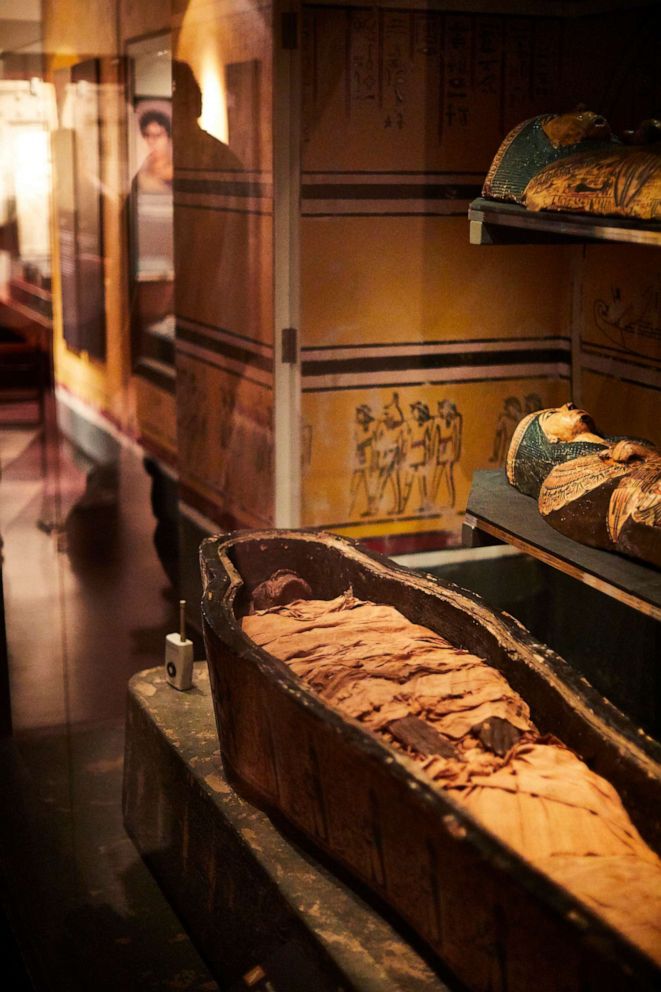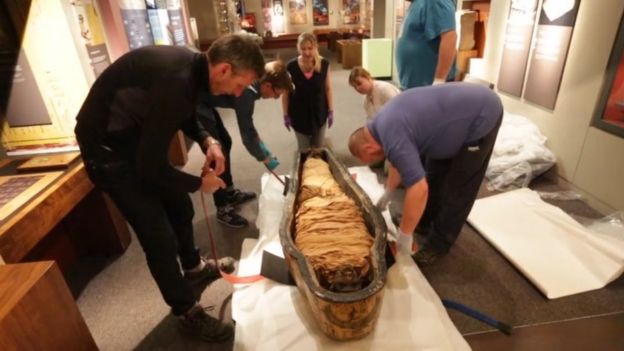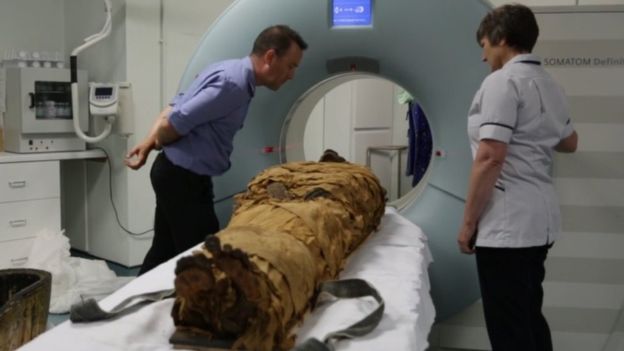3,000-Year-Old Egyptian Mummy Speaks From The Afterlife

3,000-Year-Old Egyptian Mummy Speaks From The Afterlife
Scientists have fulfilled the wish for life after death of a mummified Egyptian priest-by replicating his voice with artificial vocal cords.

The voice of Nesyamun was reproduced as a vowellike sound reminiscent of the bleat of a sheep.
The priest lived between 1099 and 1069BC during the politically complex reign of Pharaoh Ramses XI.
As a priest in Thebes, for his ritual duties which included singing, Nesyamun would have needed a strong voice.
His voice fell silent when Nesyamun died but a team of researchers brought it back to life 3,000 years on.
They have done so by producing a 3D-printed voice box based on Nesyamun’s vocal tract, which was scanned to establish its precise dimensions.
By using the vocal tract with an artificial larynx sound, they synthesised a vowel sound meant to be similar to the voice of Nesyamun.

It is believed to be the first project of its kind to successfully recreate the voice of a dead person through artificial means. In the future, the researchers hope to use computer models to recreate full sentences in Nesyamun’s voice.
The research – carried out by academics at Royal Holloway, University of London, the University of York and Leeds Museum – was published in the Scientific Reports journal on Thursday.
The voice recreation technique “has given us the unique opportunity to hear the sound of someone long dead”, said study co-author Joann Fletcher, a professor of archaeology at the University of York.
Archaeology professor John Schofield, also of the University of York, told the BBC it was Nesyamun’s “express wish” to be heard in the afterlife, which was part of his religious belief system.
“It’s actually written on his coffin – it was what he wanted,” Prof Schofield said. “In a way, we’ve managed to make that wish come true.”
How exactly did they recreate Nesyamun’s voice?
In humans, the vocal tract is the passage where sound is filtered. That sound is produced at the larynx – the organ commonly known as the voice box – but we only hear it once it has passed through the vocal tract.
To copy the sound produced by Nesyamun’s vocal tract, the exact dimensions of it were mirrored in 3D-printed form.

But this process is only possible when the soft tissue of an individual’s vocal tract is reasonably intact.
In Nesyamun’s case, the fact that his mummified body was well preserved made this more likely, and the team confirmed it using a CT scanner at Leeds General Infirmary.
His “voice” was then generated by an artificial larynx sound – a method commonly used in modern speech synthesis systems.
The next step for the researchers will be to use computer models “to generate words and string those words together to make sentences”, said Prof Schofield.
“We’re hoping we can create a version of what he would have said at the temple at Karnak.”
Nesyamun was a priest at the temple of Amun in the Karnak complex at Thebes (modern-day Luxor).
He was a waab priest, which meant he had reached a certain level of purification and was therefore permitted to approach the statue of Amun in the most sacred inner sanctum of the temple.

Studies revealed that Nesyamun suffered from gum disease and severely deteriorating teeth. He is thought to have died in his 50s, possibly following a severe allergic reaction.
As the only mummy to have been dated from the reign of Ramses XI, Nesyamun offers important insights. Scientific analysis of his remains has contributed to a greater understanding of ancient Egypt.
Nesyamun’s mummified remains are on display at Leeds City Museum.